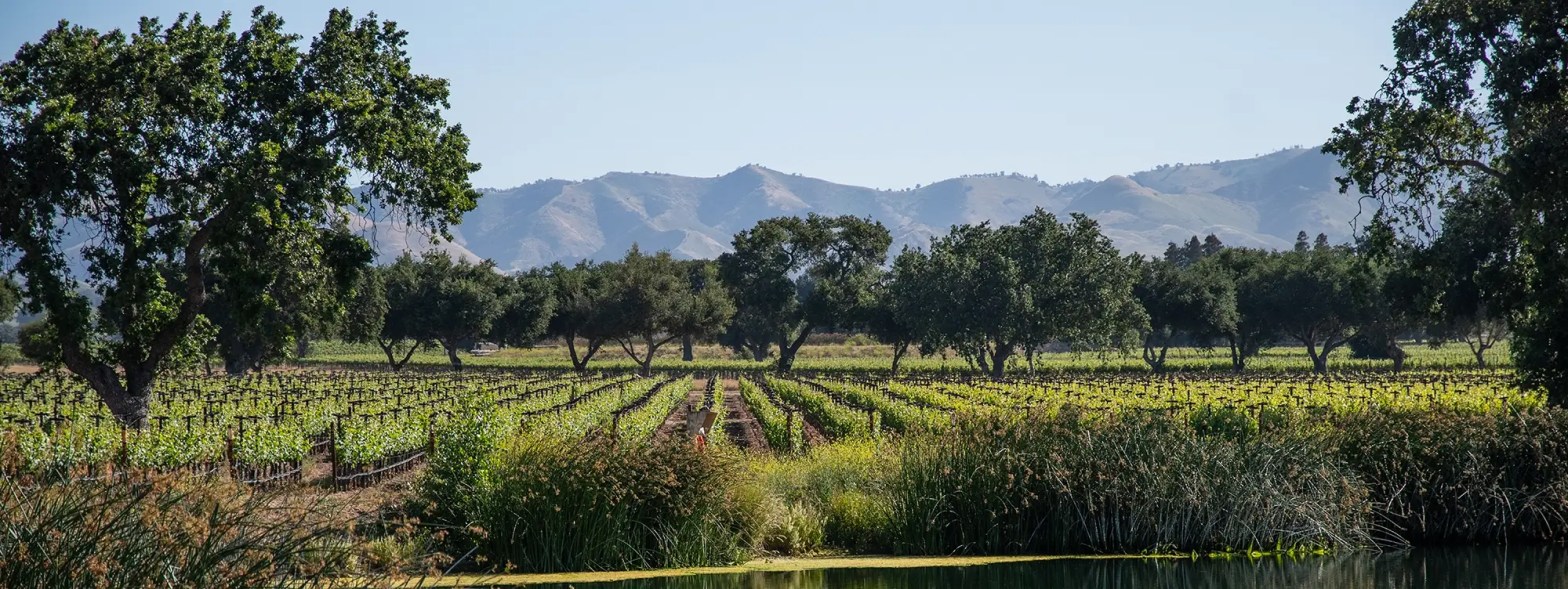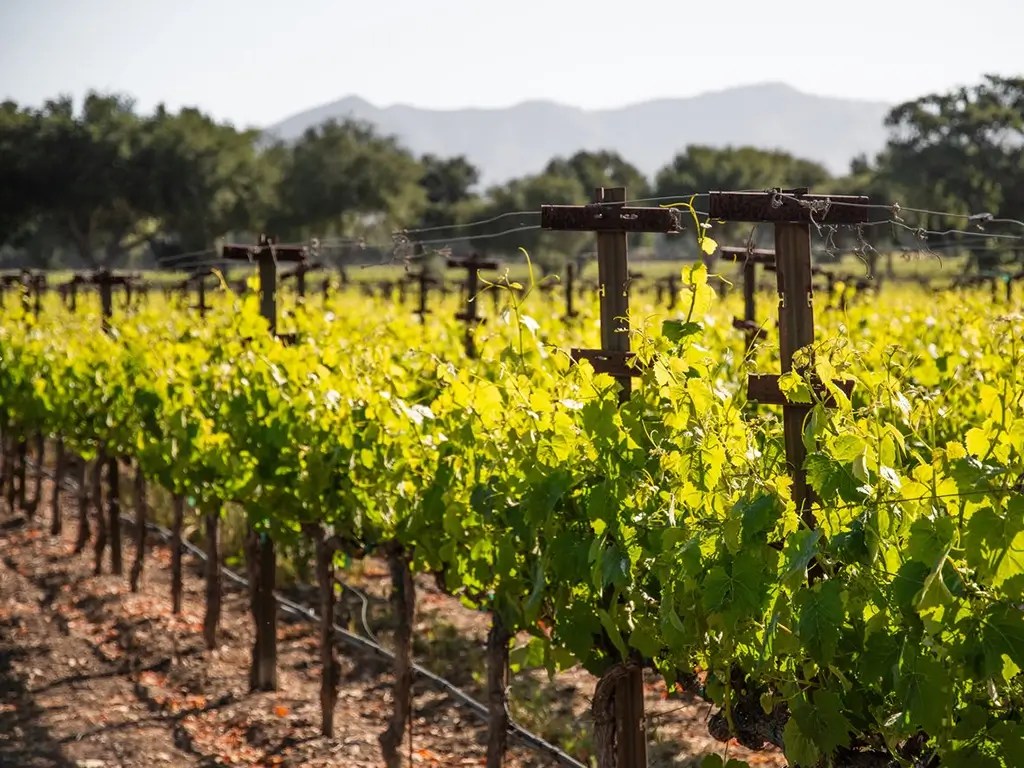
Santa Ynez Valley AVA & History
Nestled in the heart of California’s Central Coast, the Santa Ynez Valley is one of the region’s most sought-after destinations. Located just two hours north of Los Angeles and five hours south of San Francisco, this picturesque valley offers stunning scenery, outdoor adventures, great restaurants, and world-class accommodations.
For wine enthusiasts, the valley stands as Santa Barbara County’s top wine destination. The region boasts the highest concentration of wineries in the area, with a history that dates back to before Prohibition when nearly 5,000 acres were planted to vines. After decades of recovery, the valley was granted AVA (American Viticultural Area) status in 1983. Today, over 7,500 acres are planted with grapes, and the area continues to thrive as a renowned wine region.
The valley’s diverse climate plays a key role in its success. From the cool coastal regions in the west to the more moderate eastern areas protected by coastal hills, the Santa Ynez Valley is a perfect home for a wide variety of grape varieties—from Chardonnay and Pinot Noir to Syrah, Merlot, and Cabernet Sauvignon. Whether near the ocean or higher ground, each microclimate offers its own unique influence on the wines.
The valley’s rich history is equally captivating. Settled in the late 1800s, towns like Ballard, Santa Ynez, Los Olivos, Solvang, and Buellton have deep agricultural roots. Initially known for cattle, sheep, and a wide array of fruit crops, the area later saw the rise and fall of the dairy industry. Today, the valley is home to over 50 wineries, cattle ranches, and thoroughbred horse farms.
The stagecoach played an integral role in the valley’s early days, providing transport between San Francisco and Yuma, Arizona. The arrival of the Pacific Coast narrow-gauge railroad to Los Olivos in 1887 further transformed the area, making it easier to ship farm products and connecting the valley to the broader California economy.
With a unique blend of rich history, stunning landscapes, and a thriving wine scene, the Santa Ynez Valley continues to offer an unforgettable experience for those who visit.
Our Vineyards
Firestone benefits from a unique climate, where warm, sunny days give way to cool, coastal afternoons and evenings. With temperature swings of up to 50 degrees during the summer, our vineyards experience ideal diurnal variation, creating a long, steady growing season. Situated in a “sweet spot,” our location is warmer than the Santa Rita Hills to the southwest and cooler than the eastern areas of the AVA—making it perfect for a wide range of grape varieties. Our estate vineyards are planted along mesas of sandy loam and rocky sub-soils that drain well. These low-nutrient soils naturally limit vine growth, resulting in concentrated, balanced wines that reflect the character of the land.


Sustainability
Our estate vineyard program is built around achieving the perfect balance for each vine. Through careful canopy management, irrigation control, and precise crop management, we tailor our practices to the unique needs of each varietal. By aligning with the natural rhythms of the land, we ensure steady, complete maturation while staying true to our commitment to sustainability.
History
“Firestone Vineyard: A Legacy of Entrepreneurship and Adventure
Firestone Vineyard is built on a family legacy of entrepreneurship, adventure, and a deep connection to the land—a tradition that dates back over a century to legendary tire innovator Harvey Firestone. Known for his partnership with Henry Ford and Thomas Edison, Harvey exemplified the American dream, yet always remained grounded in his love for farming. As one biography put it, despite his global success, “”no matter how far he traveled, his family farmstead home in Columbiana, Ohio, was never far from his thoughts.””
This bond with the land would become a hallmark of the Firestone family, carried through the generations.
In the early 1970s, Harvey’s son Leonard Firestone, former U.S. Ambassador to Belgium, established a family ranch in the rugged Santa Ynez Valley of Santa Barbara County. At the time, the region wasn’t on the map for California winegrowing, but Leonard saw the potential in its coastal climate and rich soils. Initially planning to sell grapes to North Coast wineries, Leonard’s vision grew, and he soon enlisted his son Brooks and his wife Kate to help establish Santa Barbara County’s first estate winery.
In 1987, Los Angeles Times Magazine recognized Brooks Firestone as a pioneer in the industry: “”He was a pioneer, an inspirer, and expander of possibilities; he took a chance on an untried wine area, then stuck with it and made it pay.””
Today, Firestone Vineyard continues its legacy of excellence under the leadership of Vintner Bill Foley, who acquired the winery in September 2007. Through Bill’s guidance, the winery continues to evolve, remaining true to the visionary spirit that began more than 50 years ago.”

